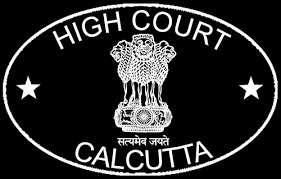Sanjay Kishan Kaul, J.@mdashThe petitioners are in occupation of shops situated at Dariba Pan Areas, Paharganj, New Delhi. It is stated that some of the persons were original allottee who initially owned the properties while others are purchasers on power of attorney basis. The petitioners are aggrieved by the scheme/ policy of 13.7.2001 seeking to charge extra amount as damages from the petitioners. The petitioners have also claimed that properties should be transferred to them on ownership basis.
2. The contention of the learned counsel for the petitioners is that though petitioners were originally charged @ Rs. 3.50 p.m., from April 1995 the rates are suddenly sought to be increased to Rs. 7/- per sq. mtr per month for original allottees and only for ground floor while for other floors and for subsequent purchasers for all floors, it is to be Rs. 10/- per sq. mtr per month. For commercial user the rate is to be Rs. 30/- per square meter p.m. for the original allottee and Rs. 60/- per sq. mtr. p.m. for the subsequent purchaser. Learned counsel for the petitioners also contends that the said rates cannot be retrospectively applicable from April 1995 and there is arbitrary increase in rate. Learned counsel contends that in other markets in the same area are not being so charged.
3. In the counter affidavit filed by the respondents, it is stated that only petitioners No. 1 is the original allottee and four other persons are legal heirs of original allottee while all other persons are unauthorised occupants. There is no dispute that the rates are different for the original occupant, legal heirs on one hand and the unauthorised occupants who are subsequent purchasers on the other hand. In the counter affidavit, it is stated that survey of the slum properties was conducted inter-alia to verify the unauthorised occupant where property had changed hand. Even a show cause notice was issued for the said purpose. It is further contended that initially rates were higher in 1995 as fixed by the respondent but since numerous representations were received against the same, this aspect was re-considered and rates have been subsequently reduced. It is in these circumstances, that the rates are sought to be charged from 1995 onwards.
4. Learned counsel for the respondents contends that there cannot be any arbitrariness in such fixation of rates since admittedly the petitioner are not the owners of the shops in question. Further the difference in rates is based on the fact whether the space is being used for residential purpose or commercial as also on the fact whether it is occupied by the original occupant, legal heirs or by unauthorised occupants who have purchased the same without any permission. The revision also came into being on 10/15/2001 which is placed on record. The earlier slab rates charged was of Rs. 15/- to 30/- per square meter per month but maximum cut off rates was Rs. 60/- per square meter and different categories have been dealt with differently under the policy. A summary of status of the various petitioners has also been filed as annexure A. The copy of the decision taken on 27.11.1995 has also been filed though the contention of learned counsel for the petitioners is that same did not come into force.
5. I have considered the submissions advanced by learned counsel for the parties. It cannot be disputed that amongst the various petitioners only a limited number of them fall under the category of original allottee and their legal heirs. The rest are unauthorised occupants who have purchased the properties without any permission and would fall under the category of unauthorised occupants.
6. It is also worth noting that admittedly structures up to III floor have been built up on the space which was to be occupied only on the ground floor of the shops in question. A reading of the policy for regularisation of unauthorised occupants in slum properties dated 27.11.1995 shows that these aspects have been considered and various categories have been made along with proposed revision of damages. I am thus unable to agree with the contention of learned counsel for the petitioners that merely because the policy is not implemented, the same is of no relevance. A copy of the resolution dated 15.5.2000 shows that an attempt was made to review earlier policy and rationalise the same on the basis of the representations received and the revision has been made in terms whereof the categorisation cannot be said to be arbitrary and illegal since it cannot be said that residential and commercial properties are to be treated identically nor can it be said that the original occupants and legal heirs as also the subsequent purchasers stand on the same footing. Insofar as the revision of charges are concerned, a decision to implement it by charging per square foot of floor was rational specially taking into consideration the properties have been constructed up to IIIrd floor even though originally it was up to ground floor only. If revision has not taken place for number of years, the consequence of the same would be that there would be a larger jump in the revision which takes place. It may also be noted that no recoveries is being made prior to 1995 when the regularisation of these properties was taken into consideration. The rates proposed for residential are Rs. 7/- per square per month as per floor area in possession and commercial @ Rs. 30/- per square meter for the floor area per month. This is only for the original occupiers and the rates are higher for the subsequent purchasers who are unauthorised persons. Provision has also been made for mutation in the name of legal heirs on payment of processing charges of Rs. 500/- in each case.
7. The policy itself now provides for periodic revision in future by 15% increase after every three years on the basis of the existing rates. Even this is sought to impugned by the petitioners since learned counsel for the petitioners state that there should not be any future increase. I am unable to accept this contention of learned counsel for the petitioners since I am of the considered view that it is appropriate that in such cases mechanism be inbuilt for future increases as otherwise the problem which has cropped up in the present petition will also arise in the future.
8. There has to be periodic increase in the rates. Further it does not preclude the respondent from re-considering this aspect at any stage of time if they are of the view that rate of increase is not in terms of the prevalent market conditions.
9. In view of the aforesaid decision, I do not find any infirmity in the final decision. Insofar as the arrears of amount from 1995 are concerned as explained above the same arises on account of the fact that this also was sought to be laid down in 1995, but on representation the matter was re-considered. Not only that Installments have been provided for payment of arrears.
10. In view of the aforesaid, I find no merit in the writ petition.
Dismissed.
Interim orders stand dismissed.
11. Needless to say that amounts already paid by the petitioners should be adjusted against the dues payable by the petitioners.
C.N.No. 10419/2002, 9191/2002
Dismissed.
C.M.No. 11702/2002
Dismissed as withdrawn.

